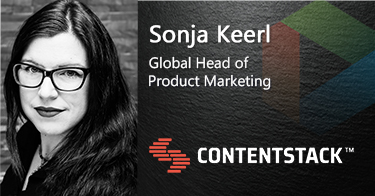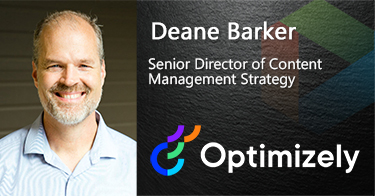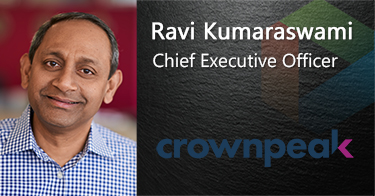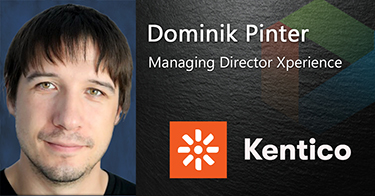CMS-Connected Wades Into the Forrester Wave Report for Agile CMS 2021
The Forrester Wave describes its reports as a guide for prospective organizations considering their purchasing options in a technology marketplace with a publicly available methodology which they apply consistently across all participating vendors. For its Agile CMS Q1 2021 report, Forrester used a 26-criterion evaluation process to identify top-performing CMS platform providers, then researches, analyzes, and scores them.
Forrester coined the term Agile CMS in 2018 as an omnichannel approach. This term resonated industry-wide, which led to the creation of a new Forrester Wave category. It’s also worth mentioning that in 2020, Gartner announced it would be archiving their Magic Quadrant (MQ) report for web content management — their explanation being that the CMS market had reached its end with little differentiation in vendor offerings. I wholeheartedly agree it was time for Gartner to retire their MQ CMS reports, but in my opinion, it was because Gartner’s analysts had reached a point of repetitiveness. Instead of maturing alongside the CMS market, such as with Forrester’s Agile CMS category, Gartner instead jumped on the Digital Experience Platform (DXP) bandwagon, which by their own recent admission, is a fragmented and still-evolving market.
Earlier this year, Forrester released their widely anticipated Wave report on Agile Content Management Systems, showcasing fifteen content management system (CMS) providers that matter most to Forrester. The fifteen platforms in alphabetical order are Acquia, Adobe, Amplience, Automattic, Bloomreach, Contentful, Contentstack, CoreMedia, Crownpeak, Kentico Xperience, Magnolia, OpenText, Optimizely, SDL, and Sitecore.
At a glance, the images below illustrate that there have been a few minor changes over the last four years. Contentstack makes its first appearance in The Wave, while Progress Sitefinity was bizarrely pushed right out. Adobe and Acquia hold fast to their Leaders positions while Sitecore was edged out of its place by new Leader, Optimizely.
 Click here to receive your free copy of The Forrester Wave: Agile Content Management Systems (CMSes) Q1 2021
Click here to receive your free copy of The Forrester Wave: Agile Content Management Systems (CMSes) Q1 2021
Click Q4 2018 Images to Enlarge
|
Click Q1 2021 Images to Enlarge
|
|
|
|
|
For CMS-Connected’s review of the Forrester Wave for Agile Content Management Systems 2021-Q1 report, I reached out to one platform provider from each of the four Wave categories Optimizely for the Leaders category, Contentstack for the Strong Performers category, Crownpeak for the Contenders category, and Kentico for the Challengers category.


Interviewee: Sonja Keerl, Global Head of Product Marketing at Contentstack 
Contentstack has made its first appearance in Forrester’s Wave with the highest score possible in six different categories. Being relatively new to the agile CMS market, how did Contentstack earn such a solid position in their debut?
"While Contentstack is a relatively new offering in the Agile CMS market, it is the third joint venture of a longstanding leadership team and was built on the foundation of decades of cloud transformation and enterprise-grade CMS implementation services. Contentstack was released to the public in June 2014, although several enterprise customers used the platform in production even prior to that, so the technology was able to cure and mature and earn its enterprise-grade chops. It’s worth pointing out that the team behind Contentstack previously built an industry-leading cloud integration platform called Built.io, and that experience has allowed Contentstack to design a superior integration architecture for its platform. The technical expertise is paired with a Care without Compromise™ customer obsession and an explicit commitment to equality between business and technical users. With the evolution of the category, the team had the unique opportunity to reshape an Agile CMS that caters to the needs of tomorrow without the tech debt (and maintenance burden) of yesterday. We understand how Agile CMS should work for business teams and technologists and reinvented what easy, intuitive and powerful looks like in a cloud-native, API-first Enterprise Software world."
How does Contentstack respond to Forrester’s assessment that “the solution has weaker practitioner options and offers only on-par capabilities for both user tools and community offering?”
"The evaluation predates the launch of our new user-driven Content Creation Experience, which has since raised the bar across the industry for what practitioners can expect in an Agile CMS. Also, Forrester compares Contentstack’s toolset to that of an entire suite, such as Adobe’s AEM. In that light, indeed, Contentstack has “fewer buttons.” However, through interoperability, Contentstack gives more power to the business users, resulting in the highest scores for channel support and experience management. Those criteria speak to value, and critically important - TIME to value.
"Having said that, given that Contentstack has been in the market for a much shorter time than its decades-old counterparts, we are proud to have scored “above par” on so many mission-critical aspects of an Agile CMS and “on par” with such legacy vendors."
Forrester feels Contentstack is a good fit for tech-smart retail and financial services companies looking for a modern headless-first CMS. Why those particular markets, and are their other strong market fits for Contentstack?
"Retail, and any commerce-centric use cases for that matter, have the highest urgency and easiest business case for a direct revenue stream improvement by using modern technology to continuously improve direct revenue streams and the customer experience. This urgency has only increased - and expanded to consumer brands going direct - in the digital-only / digital-first pandemic reality.
"Financial Services has the strictest requirements for reliability, security, and governance. Contentstack’s enterprise focus with regards to underlying workflows, interoperability and monitoring, and its superior security across the product and processes allow it to meet those expectations. Contentstack is the only Agile CMS that combines modern architectural principles with the high standards of Financial Service organizations. We have seen in the past year that many traditional Financial Services companies had to rapidly evolve their digital practices, and in many cases, pivot in-person-centric business models to digital-first ones. This, too, has been a driver for the high adoption of Contentstack in Financial Services.
Healthcare is another industry that Contentstack is well-suited for and has seen rapid digital-first growth for the same reasons as Financial Services. Media and Entertainment benefits from Contentstack over both traditional and other headless CMS vendors due to the inherent need for omnichannel customer experiences — with Gaming, in particular, needing to rely on extreme performance and scalability."
Forrester states that Contentstack offers “superior support in decoupled delivery from its headless roots and experience management capabilities to deliver content to omnichannel endpoints.” Can you elaborate on that comment?
"As a native API-first CMS, Contentstack exposes all functionality programmatically and offers structured pieces of content (known as “atomic content”) at its core. Combined with cloud-native delivery models and edge capabilities that cater to offline use cases, Contentstack supports any and all channels. More than a mere Content-as-a-Service API, Contentstack also allows for business users to orchestrate the experience by combining the entire marketing technology stack within the Contentstack User Interface. Automation mechanisms allow for bidirectional communication between adjacent technologies, such as translations, personalization engines, and ecommerce solutions, to streamline the long-term and everyday user experience—and ultimately make it more effective.
"With Contentstack’s decoupled nature, business users can control the representation of the experience—across web pages, mobile apps, kiosks, and screens, in-game, AR/VR, voice, etc.—without the developers needing to deal with proprietary templating for the look and feel of any given channel. Contentstack is ahead of other vendors that focus on Content-as-a-Service delivery and developer tooling but do not cater to the needs for control and flexibility of business practitioners without depending on developers and their available bandwidth."
A recent Randstad survey uncovered that 58% of workers do not receive proper training to use platforms like CMS solutions. Contentstack proclaims that it provides an experience that is so intuitive, it eliminates the need for training. Please explain this unique Contentstack advantage?
"Contentstack was born from the need of content teams for ease and speed, and empowering those teams has always been a North Star in our product vision and execution. Our customers tell us that even on the classic user interface, editorial onboarding took only about half an hour. With the 2021 editorial experience enhancements, we are already seeing this onboarding reduced even further. This matters because Contentstack customers need to democratize content creation and make updates across their subject matter ecosystem internally and across creative agencies and other stakeholders externally.
"Contentstack’s flexible workflow engine enables suboptimal content to be updated much faster for better customer experiences because support and local staff have a clear process to affect change themselves. This, in turn, frees up content marketing teams to focus on high-value and high-impact content and strategy. Plus, with the additional capacity for content creation, marketers can now reach the critical mass to effectively personalize omnichannel experiences: an upwards spiral toward exceptional content experiences that drive business outcomes."


Sponsored Advertisement


Interviewee: Deane Barker, Senior Director of Content Management Strategy at Optimizely (formerly Episerver) 
What do you think earned Optimizely one of the top three spots in Forrester’s Agile CMS report 2021? And what does it take to maintain a Leadership position in today’s content management software industry?
"Optimizely has recently grown both our team and offerings significantly through acquisition, with the additions of optimization and content personalization platforms expanding Optimizely’s agility when it comes to content management. To maintain a Leadership position in today’s content management software industry, organizations must have an ear to the ground to really understand what customers are looking for. Our unique method of constant experimentation and optimization enables us to adapt swiftly to ever-changing customer preferences."
What differentiates the Optimizely platform from the other two leaders in the Wave report, Adobe and Acquia?
"Value, usability, and completeness. Our customers consistently achieve positive ROI on the Optimizely platform quicker than the alternatives, we have industry-leading usability through our platform, and we’ve pushed into both experimentation and recommendations at a rate far exceeding the broader industry."
How do you respond to Forrester’s assessment that Optimizely lags others in workflow and approval capabilities?
"We’re still assessing the need here. We recently moved from a fully-featured workflow system to a more simplified approval system, which is what we’re convinced most of our customers really need. Our team continues to believe that integrated workflow is one of the more over-purchased features of a CMS. We are of the mindset that integration with a broader, external work management tool that works both in the context of the CMS and external processes is likely the right answer, and we’re actively investigating options in this area."
Forrester feels Optimizely is a good fit for midmarket and enterprise clients in retail, financial services, and technology. Why those particular markets?
"Midmarket and enterprise companies in the retail, financial services, and technology spaces are increasingly looking for solutions to give them a leg-up in today’s very competitive digital marketplace. These companies are looking to make the leap from leaning on third-party data to having the resources to do their own first-party research, which is becoming more and more critical to success as consumer data privacy comes to the forefront. We believe that our ability to offer a comprehensive set of solutions is beneficial for midmarket and enterprise businesses who want the reliability of an enterprise, but the agility of a small business - Optimizely offers the full spectrum."
In 2019, Episerver acquired B2B commerce platform Insite Software and analytics and personalization provider Idio. In 2020, there was the acquisition of Optimizely, effectively combining all existing Episerver products and solutions under the Optimizely name. Then, in March of 2021, Optimizely acquired leading CDP provider Zaius. Given all the recent acquisitions, what’s the overall future roadmap strategy with Optimizely?
"Over the next 18 months, integrating our entire platform is our main challenge and focus. To this end, we’re working on a complete revamp of our UI to make it more modular and accessible to external products. Our team plans to develop a “plugin” platform which makes it easier for us to add new functionality and components to the stack while presenting them to the market and our customers as an integrated whole."


Interviewee: Ravi Kumaraswami, CEO at Crownpeak 

According to Forrester, Crownpeak is a leader in highly regulated industries where consistency and compliance are business imperatives. Is this a fair assessment of Crownpeak’s key differentiator?
"While Crownpeak serves customers across industries, we are a leading vendor specifically for highly regulated industries due to our differentiation in security and integrated governance. In addition to this area of differentiation, with our recent acquisition of e-Spirit, we are better positioned to compete in the eCommerce/retail space.
"Crownpeak takes the security and scalability of its solution very seriously. When our customers’ editing volume reached up to 8.8x its normal rate in the aftermath of the Covid lockdowns, we were able to scale seamlessly to meet their needs. And our new optional serverless hosting technology can provide infinite elasticity for organizations needing the highest levels of scale. These provisions take the fear of success away, as we are able to support our customers with highly secure, highly scalable solutions as they grow. We also carry our own SOC2 and FISMA certifications and have partnered with AWS to deliver proven, live resilience to DDoS attacks of up to 100 million requests per minute.
"In addition, Crownpeak’s integrated Digital Quality Management and Digital Governance tools provide accessibility (WCAG) and privacy and consent compliance (GDPR, CCPA). As organizations around the world face increasing scrutiny and regulatory environments with accessibility, privacy, and industry-specific rules, Crownpeak uniquely ensures that the rules set up by organizations are validated and checked before an experience can even be published – empowering marketers to execute faster without fear of potentially going live with unapproved and non-compliant content."
How do you respond to Forrester’s assertion that Crownpeak trails others in content repository and workflow capabilities?
"We actually believe that Crownpeak’s content repository and workflow management exemplify our philosophy of customer empowerment and enablement by providing a delicate balance of governance and flexibility. As such, they’re key differentiators for Crownpeak – allowing customers to configure the Crownpeak platform to perfectly meet all business requirements while providing the best editorial and content management experience.
"Crownpeak’s content repository supports a content-first approach to content modeling and experience configuration – allowing for rapid content creation and generation at every level, from content fragments to entire site collections, and everything in between. With full templating, component building, and SDKs, developers can configure the content repository to produce any digital experience leveraging multiple development approaches, including no-code, low-code, and a code-first approach. Crownpeak’s decoupled architecture ensures that customers can produce any experience, in any technology, to be deployed anywhere. In addition, Crownpeak’s API-capable content repository is designed to support content ingestion as well as content deployment in any technology and to any destination, thanks to Crownpeak’s decoupled architecture, which supports headless deployment with rich preview, inline editing, and drag-and-drop editorial capabilities.
"Crownpeak provides unique workflow capabilities with a fully visualized workflow configuration for full life-cycle management – from draft to deployment, to retirement and archiving, with approval steps in between. Crownpeak’s workflow supports individual contributors, as well as groups of editors, with support for complex approval rules to facilitate content planning, auto-task assignments, and full automation. Crownpeak’s workflow also incorporates a sophisticated rules engine with support for scheduling, automation, notifications, annotation, conflict resolution, and trigger execution of internal, as well as external, processes via third-party APIs. Release management enables project and content planning capabilities from ideation to completion with full audit history, versioning, and roll back capabilities. Task assignments and workflow status are displayed alongside the content, as well as in dedicated dashboard widgets and reports."
Forrester also stated that Crownpeak “has solid capabilities in channel support, especially related to experience management and the ability to deliver content to omnichannel.” Can you elaborate on this?
"Crownpeak’s powerful omnichannel capabilities are possible because of Crownpeak’s decoupled and flexible architecture, its robust templating framework, and bi-directional high-speed public APIs. This unique combination means that Crownpeak can generate any experience, in any technology, and deploy it to any channel, via a number of different deployment patterns.
Crownpeak’s decoupled architecture, which separates the management of the experience from the delivery of the experience, allows customers to repurpose content and deliver it headlessly via APIs, or traditionally in any technology including .NET, Java, Jamstack, PWAs, and much more. Crownpeak can generate and power rich digital experiences across any channel, including web, mobile, social, marketing campaigns, IoT devices, and more. In addition, Crownpeak supports the translations and localization of any content for global multi-lingual and multi-regional experiences.
"Crownpeak offers customers several content deployment patterns, including traditional content publishing, content injection, content ingestion, content involved via third-party APIs, as well as content delivered as a service or headless."
Forrester also mentioned that Crownpeak has a “practitioner program that is still emerging.” Can you elaborate?
"With built-in headless SDKs for the most popular web development frameworks and full support for all back-end languages, Crownpeak gives developers the flexibility to create using the right language for the job. Our growing API library reduces the amount of code that developers have to create to implement features and functions. Crownpeak has built up our community hub for our customers, partners, and developers over the past few years, and it continues to expand."
What are Crownpeak’s plans to expand the integration partner channel?
"Crownpeak’s recent acquisition of e-Spirit has greatly expanded our partner network, both in terms of number of partners as well as in their geographic spread. We now have extensive partner coverage in both the US and EMEA and beyond."
The recent acquisition of e-Spirit brings together Crownpeak’s SaaS-based CMS with e-Spirit’s commerce experiences and AI-powered personalization. What is the future roadmap for these two platforms — total amalgamation into the Crownpeak platform or a separate product module?
"Firstly, as we continue to integrate the companies, aligning with Crownpeak’s core values around customer obsession is our top priority. We’re dedicated to ensuring that we empower all of our customers to continue to get maximum value from our products. We are also excited that all our customers and prospects, regardless of which CMS platform they are leveraging (Crownpeak’s or e-Spirit’s), can now immediately take advantage of FirstSpirit’s Intelligent Content Engine (bringing powerful AI-driven personalization capabilities) as well as Crownpeak’s digital quality, accessibility compliance, privacy consent, and tag monitoring products.
"Our strategy moving forward will be to take advantage of both CMS platforms’ decoupled management from delivery architecture and composable API-first surrounding product components. In the near term, our focus will be to enable both CMS platforms to leverage the same content as a service and site search headless capabilities by integrating Crownpeak’s CMS platform with the FirstSpirit CaaS and SmartSearch products.
"In the mid-term, our focus will be to enable both CMS platforms to leverage the same integrations, including FirstSpirit’s rich content-driven e-commerce editing experience, powered by deep integrations to the industries’ top e-commerce platforms, including SAP, Spryker, Salesforce, commercetools, and more.
Throughout our near-term and mid-term focus, we will be creating composable micro-services packages out of key elements of both the Crownpeak and FirstSpirit CMS platforms to support our long-term goal of delivering a content author and developer experience that brings together the best of both platforms."


Interviewee: Dominik Pinter, Managing Director Xperience at Kentico 
According to Forrester, “Kentico is a good fit for companies that have outgrown a simple CMS product and are looking to upgrade to an all-in-one solution without the accessories of more modern agile CMS offerings.” How do you respond to Forrester’s viewpoint?
"I agree with most of what Forrester says here. We are a great fit for companies with needs beyond CMS as our solution also offers digital marketing (e-mail marketing, marketing automation, personalization, etc.) and digital commerce capabilities. And it’s all a fully integrated platform built by one company, so the entire solution works end-to-end. I’m just not sure what Forrester specifically means by modern agile CMS offering. Our solution can be deployed both on-premise and in the cloud. It can be used as a traditional DXP or as a headless solution. We are going to offer our solution in the form of Software as a Service soon. Last but not least, the developers can fully leverage the latest technology stack such as .NET Core, React, and so on."
Kentico goes to market with two CMS platforms: Kontent, a headless-first CMS, and Xperience, a DXP offering. Why do you feel Forrester only reported on Kentico Xperience but omitted Kontent for the report?
"Firstly, we suggested back to Forrester to cover both of our solutions, but Forrester’s policy was to cover only one product per company. It was Forester’s decision to go for Kentico Xperience. I believe it’s because Kentico Xperience is better known in the market, it has dozens of thousands of website running on it, and Forrester covered Kentico Xperience already in their Forrester Wave for WCMs report. But, both solutions would fit the criteria of the Agile CMS definition, in my opinion."
Forrester contends that Xperience lags the market in other core agile capabilities like collaboration and planning, and Kentico’s strategy is still evolving beyond a web and page-centric view. Is that a fair assessment?
"Well, we put the customers, the visitors of the digital channels, in the center of our solution many years ago. All our key capabilities beyond CMS (personalization, marketing automation, etc.) are driven by Contact Management. Contact Management is basically a Customer Data Platform, and it’s really a core part of our product."
The Forrester report indicates that Kentico is planning to expand its focus on the DACH market going forward. Can you elaborate on that plan?
"Yes, we are opening an office in Germany as we speak. But we do not focus only on the DACH market. Historically, we have always been very successful in English-speaking countries and regions — North America, the United Kingdom in Europe and Australia, and New Zealand. We see a lot of potential and interest also in many other parts of the world."
From all appearances, Kentico offers capabilities that are on par with other CMSs in the market, with well-regarded community support for both developers and practitioners. What is in the future roadmap that will help advance Kentico’s current Forrester position from between the Challengers and Contenders and into the Strong Performers category?
"Thank you for that assessment; I share that point of view. For the future, there are multiple bigger items on our roadmap:
"Improved Digital Marketing User Experience: We are optimizing the user experience for marketers who use our Digital Marketing functionality. We focus on critical jobs to be done of the business user persona (marketer). It will allow them to perform all their daily tasks more effectively using a smooth flow of work.
"Technology Change to MVC Core in Administration Interface: Our latest version (Kentico Xperience 13) allows projects to be built using MVC Core. We are now in the process of rewriting the administration interface to .NET Core and React. This will allow customers to run both frontend and backend in a cross-platform environment and in containers. It will make Kentico Xperience a unique solution in the DXP market powered by this latest technology.
"SaaS: We are going to offer Kentico Xperience as a true SaaS offering while also preserving the option to run Kentico Xperience on-premise.
"Integrating AI and ML Capabilities: For the new platform of Kentico Xperience, we plan to further enhance the use of AI and ML algorithms to provide new insights and automate the daily activities of the business persona (marketer)."
Final Comments
Forrester Analytics data from 2020 tells us that 30% of software decision-makers plan to replace their current CMS — either from the same vendor they currently have or a completely new vendor. This tells us that the agile CMS market is still crucially important and not to be passed over by the DXP pundits.
It’s worth pointing out that a few notable suite-type vendors were not included in the 2021 Wave report on Agile Content Management Systems such as Oracle and SAP. Forrester stated that these bulky enterprise firms have compelling agile-inspired offerings but are typically purchased as part of a larger marketing or experience suite vs. stand-alone. So while these offerings tick many of Forrester’s agile boxes, they didn’t include them this time around. Also, in 2019 Salesforce launched a hybrid CMS designed to help both novices and experts easily create and deliver content that’s connected to customer data. The advantages of connecting CRM and CMS are immediately evident, so I expect to see them listed in future Wave reports.
Did Forrester get it right? As with Gartner’s Magic Quadrant and other grid-type reports, it’s a good place to start. However, relying heavily on these reports is not recommended. Selecting a best-fit CMS solution is a challenging and time-consuming endeavor for any organization. It will never be as simple as selecting a dot on a grid, which in many cases has resulted in failed projects and the potential loss of a small fortune for those buyers looking to cut corners. We’ve all heard the stories.
Copyright notices and disclaimers
The contents of this review are protected by international copyright laws, database rights, and other intellectual property rights. The owner of these rights is CMS-Connected Media Corp. All product and company names and logos contained within or appearing on this review are the trademarks, service marks, or trading names of their respective owners. This document may not be copied, reproduced, distributed, or transmitted in any form or by any means without the prior permission of CMS-Connected Media Corp. While reasonable efforts have been made to ensure that the information and content of this review were correct at the date of first publication, neither CMS-Connected Media Corp., nor any person engaged or employed by CMS-Connected Media Corp., accepts any liability for any errors, omissions, or other inaccuracies. Readers should independently verify any facts and figures as no liability can be accepted in this regard — readers assume full responsibility and risk accordingly for their use of such information and content. Any views and opinions expressed in this review by individual authors or contributors are their personal views.

Gary Eisenstein
Gary has been working in the IT industry since 1993 and is the Principal Analyst at CMS-Connected, and the Founder and President of Falcon-Software. If you would like advice on how to evaluate a "best-fit" digital experience solution for your organization, Gary can be reached at gary.eisenstein@cms-connected.com.